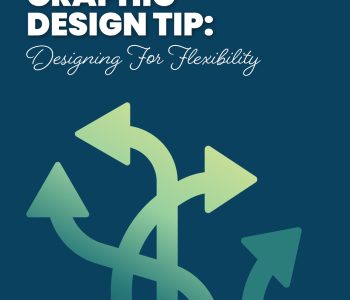
There’s a big difference between designing something that works once and designing something that works across every stage of a marketing campaign. As we graphic designers know, in marketing, a single graphic never lives on just one platform. One day it’s a social post, the next day it’s a reel, print piece, or banner. Content moves fast, and if we’re not designing for flexibility built in from the start, we may end up redesigning many times over.
Let’s talk about how to design with adaptability in mind so that your work can move seamlessly across platforms, allowing you to keep campaigns consistent and save time.
What Is Designing For Flexibility?
When we talk about designing for flexibility, we don’t mean creating a large, multi-tiered design system with full documentation (although these can be valuable). Instead, it’s about building a structure that gives you scalability across platforms, sizes, and uses without losing impact or the core message.
Think about the visual rules that make your work feel cohesive: color usage, typography, layout rhythm, image treatments, and logo variations that all work together. When you have this foundation in place, adapting a 1080×1080 pixel post into a 1920×1080 pixel web header or a 4”x6” print card becomes a simple translation and not a complete design reinvention.
In a full campaign layout, for example, you may use a headline, subhead, button, and image. For a story post, this could become the headline at the top and a simplified CTA below. In a print piece, the CTA may pair with a QR code. The elements change, but the core message and visual voice remain consistent. The goal is consistency, not carbon copies.
Designing in Multiples (Without Starting Over)
Every format has its own needs: vertical video, square posts, landscape ads, banners, print collateral. You don’t have to design each one from scratch, but you do need to plan ahead.
Some things to think about:
- Will the key message still work if the layout shifts?
- Is the typography legible on a phone screen?
- Can the background or image be cropped without losing the focal point?
If you know a specific design for a campaign will live on Instagram, email, print, and digital ads, be sure to design elements that can stretch, crop, and rearrange to meet these formats without relying on one “perfect” composition.
Tips That Make Flexible Design Easier
Once you’ve built flexibility into your design, these workflow habits make it easier to adapt across formats and campaigns:
- Create art board presets for common formats in order to streamline.
- Use shared libraries for brand colors, logos, and type styles.
- Label and organize your layers so others can easily work with the file.
- Choose images carefully to allow for cropping or adjusting without losing the subject.
- Design with white space in mind to leave room for adaptation.
These small habits maintain brand consistency and keep your content structured so that every campaign is polished and cohesive. They also save you time down the road, making your files easier to repurpose for future campaigns.
Think Big, Even on Small Projects
Whether you’re working with a global brand or a small business, designing for flexibility isn’t just about saving time; it’s about creating work that’s ready to perform. When you plan for multiple platforms from the start, your designs stay consistent, your message stays strong, and you spend less time reinventing.
Ready to see how flexible designs can amplify your brand? Reach out to us at Green Closet Creative!

